You may know the Lincoln Continental as the famous “target car,” titled as the SS-100-X, carrying John F. Kennedy on the day he was assassinated.
Kennedy had the car custom-built and turned into a stretch limousine by Hess and Eisenhardt of Cincinnati, Ohio before riding it through Dallas on November 22, 1963. The Lincoln Continental earned its place in American history as Kennedy’s last ride—but Ford’s eternal underdog also secured a place in automotive history for the engineering and design firsts that had initially attracted the beloved late President’s eye, among others.
–
McNamara’s Vendetta
Were Robert McNamara—Ford Motor Company group’s vice president for vehicle operations in 1958—to have had his way, the Lincoln Continental would have been long gone by the time it was time to design Kennedy’s limo. When the newly redesigned Continental finally went into production, the struggling car had faced the chopping block three times. Lincoln had been rescued from bankruptcy court by Henry Ford, whose wife was lusting after Cadillac-style chauffeur-driven cars. Determined to put his wife in his car instead of a competitor’s, Ford’s famous founder bought the company named after yet another legendary president, Abraham Lincoln.
Yet, less than 15 years later, Lincoln was still fighting for survival, barely scraping by on the sales of the mid-priced Zephyr. When Lincoln came up against sales obstacles yet again in 1958, Robert McNamara was ready to scrap the car completely to cut the company’s losses. But executives weren’t quite ready to give up on the Cadillac of the Ford Motor Company so they positioned the 1961 as the final attempt at reviving Henry’s pet project.
–
The Lincoln Design Study
In order to ensure that the 1961 Lincoln Continental was a success, Ben D. Mills ordered a design study to survey the reasons behind the car’s prior failures. Lincoln found that buyers were looking for more design consistency, so the brand decided to postpone upcoming model changes and lengthen the time in between major redesigns.
–
But that didn’t stop Ford’s designers and executives from changing the Continental’s design at least three times during the planning process. When designs failed to quickly come into place, Ford briefly toyed with discontinuing the car—yet again. And engineering problems were another bad sign that Clara Ford’s chauffeur-driven Ford might end up a Cadillac, after all.
But the Lincoln Continental beat the odds and dropped jaws everywhere when it finally hit the streets in 1961. Design-wise, it was nothing like the 1960 model—the 1961 model had been pared down and was clean and simple, doing away with some of the more ornate details of the previous years’ models. The 1961 Lincoln Continental was more compact, as well—designers shortened the car by 14.8 inches and reduced the wheelbase by 8 inches, bringing it from 131 to 123.
(Ads featured women—often pointed to as bad drivers in 1960s pop culture—easily parallel parking the “small” sedan.) But the most famous design features were the rear doors—nicknamed “suicide doors”—characteristic of 1960s luxury cars. Under the hood, an impressive 450 cubic inch V-8 completed the posh package.
From Goner to Design Leader
Nearly overnight, the Lincoln Continental went from being an automotive goner to a design leader; the 1963 Pontiac Gran Prix, 1963 Buick Riviera, and 1964 Imperial all followed the 1961 Continental’s lead and the Industrial Design Institute praised the car immediately. Ford’s team was happy, too, because sales were up and they kept going up throughout the 1960s—much to the cynical Robert McNamara’s chagrin.
In keeping with the results of Mills’ design study, Lincoln did little to the Continental in the years following the 1961′s success—and it paid off. Scant and subtle changes meant steady sales increases—in 1962, the numbers shot from 25,160 to 31,061 with minimal investment in design or engineering tweaks.
And 1963 models received practical minor adjustments like improved legroom and electrical upgrades.
In 1964, the grille received a little attention—and five vertical lines—and flat glass replaced curved glass on all of the doors. A few more tiny alterations in 1965 and sales jumped another 10%. Once again, designers fiddled with the grille while engineers added new front disk brakes for faster stops. Lincoln was now selling over 40,000 units a year.
1966 saw a bit of a diversion from Lincoln’s commitment to consistency. The Continental became available in a two-door pillarless hardtop version—a first in over five years. Not to be outdone, the engine was expanded to 462 cubic inches, and the interior received a makeover. But what buyers liked best was the Continental’s new price, dropped to give Cadillac a little squeeze. It turned out to be a big squeeze. Sales went up by more than 35%.
It can be argued that Mills’ design study was a spectacular success—the return to design consistency rescued the Lincoln Continental and knocked Cadillac off its pedestal. But Ford began to feel the first tremors of a shift in 1967, when four-door convertible sales nearly collapsed, and buyers started getting bored. The classic 60s suicide doors only lasted a few more years until Ford said goodbye to the 1961-inspired fourth generation designs and moved onto the Mark III in 1969.
–
You may want to see one nice custom 1965 Lincoln Continental built by Metalworks.

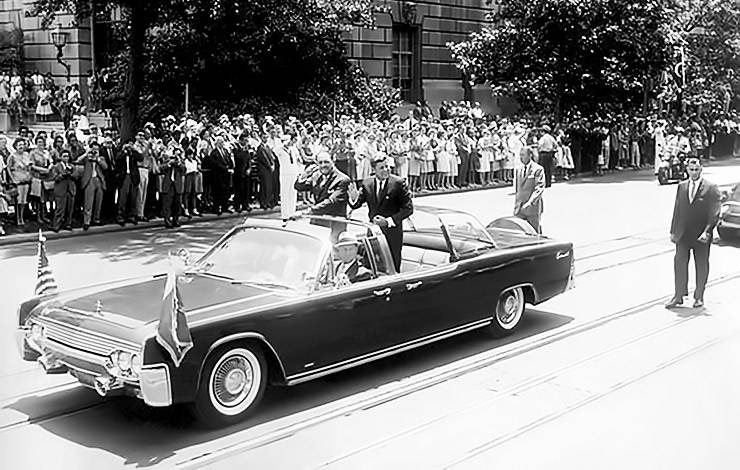
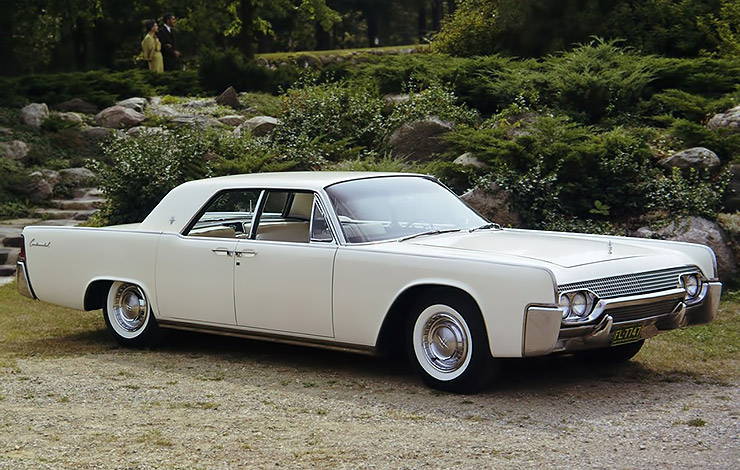
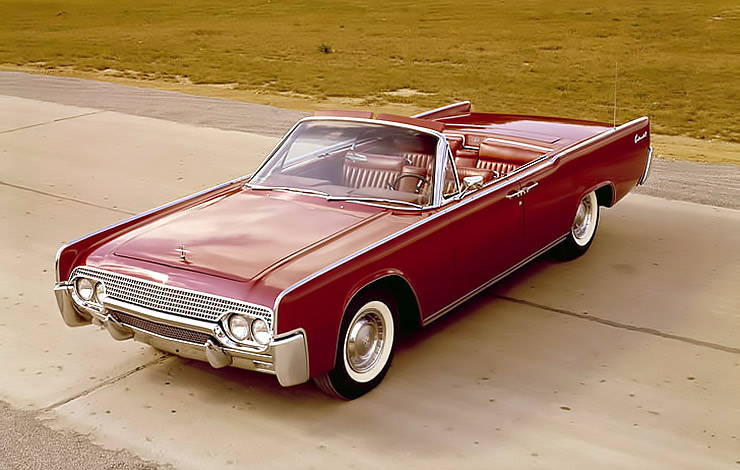
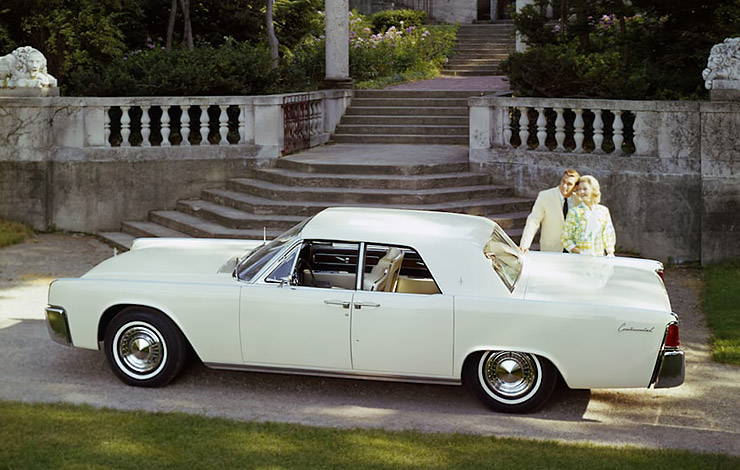
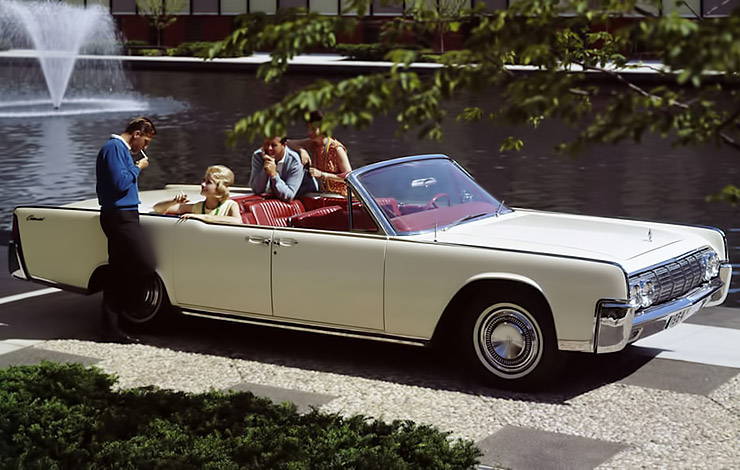
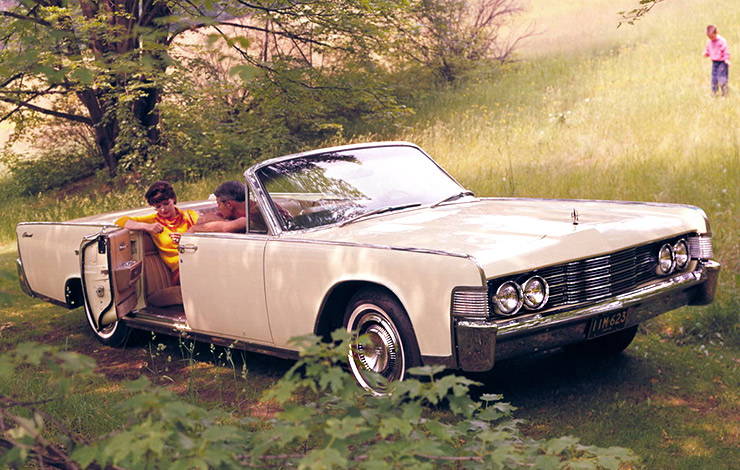
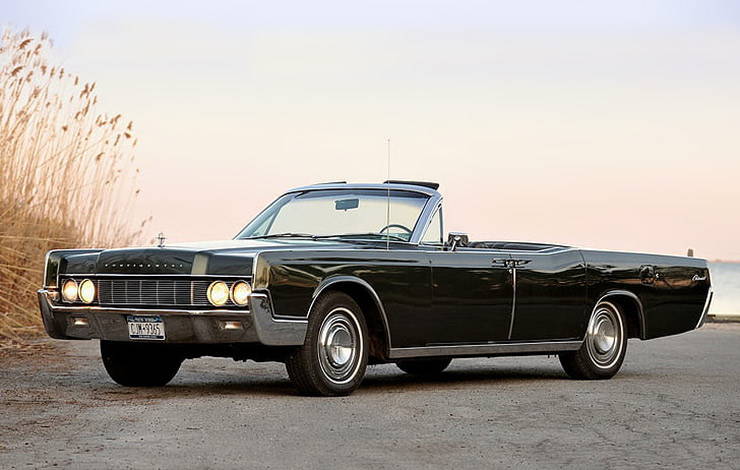











Facebook Comments